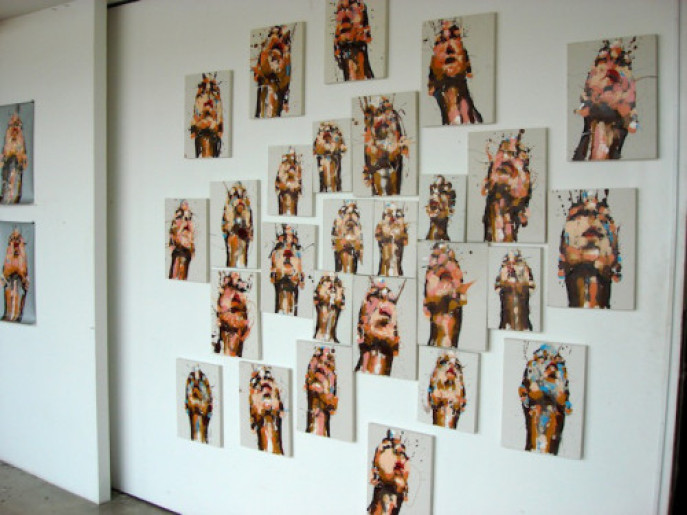
By Ellen C. Caldwell
I recently returned from a trip to Bali, where I had the pleasure of meeting painter Federico Tomasi in his Kuta studio. Colorful and emotionally charged, Tomasi and his paintings are emotive and full of life. His abstracted faces and bodies cover a range of emotions, both in their inspirations and in the reactions they draw out from viewers.
Tomasi has lived all over the world, being born in Sweden, studying in Italy, and then moving to Bali where he now lives and works. While painting there, he was deeply inspired by the island affected by its history in a really unique way.
In September of 1906, the Dutch Indies colonizing forces came ashore Bali via Sanur (a beach town nearby Tomasi’s studio). As the soldiers debarked and approached the royal palace, expecting a violent resistance, they were instead met with a horrific scene that ended Balinese independence. A silent procession of people, led by the raja of Badung, partook in what the Balinese call a puputan or mass ritual suicide. Men, women, and even children used long lances or krises to silently and systematically stab one another at the feet of the Dutch soldiers. It is said that while this puputan was occurring, some of the Dutch forces began attacking the Balinese mass, causing some of the women to mockingly throw silver and gold jewelry at the Dutch troops; though other accounts recall that the women were actually paying and rewarding the soldiers for shooting them. Regardless, it is estimated that 1000 Balinese people gave their lives that day, choosing death over subjugation and colonization.
